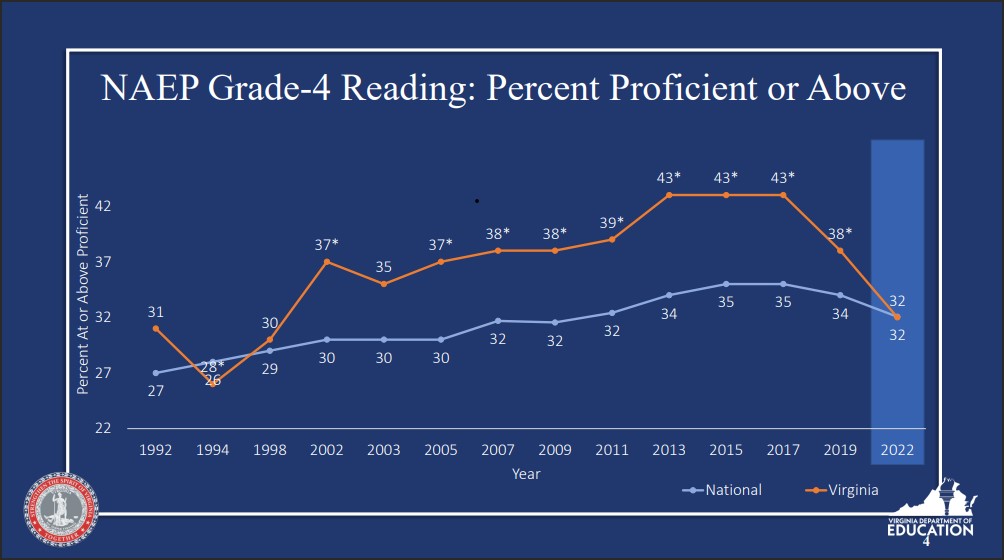
by James A. Bacon
The big news today from the National Assessment for Educational Progress (NAEP), which administers a common test for all 50 states, is that student test scores nationally saw stunning declines in math and reading over the past two years. The drop in math scores was the biggest decline ever recorded for the national assessment.
The bloodbath was even worse in the Old Dominion. Between 2017 and 2022, Virginia saw the biggest drop in 4th-grade reading scores in the country. Likewise, in 4th-grade math scores, Virginia tied with Maryland for the biggest drop in the country.
That’s the worst decline in the country! This year, Virginia 4th graders, who in 2017 were among the top performers in the country, scored a smidge below the national average. Eighth-grade English and math scores dropped in comparison to other states as well, though not as drastically.
Governor Glenn Youngkin described the learning losses in a press release as “catastrophic.” And he put the blame squarely on his predecessors, Governors Ralph Northam and Terry McAuliffe, although he did not mention them by name. “When my predecessors lowered educational standards, those lowered expectations were met…. These actions were compounded by keeping children out of school for extended and unnecessary periods.”
Virginia’s other top educators drove home the same message.
“Recent data from the SOLs, PALS and now today’s heart-wrenching decline in Virginia’s NAEP scores, are a predictable outcome of the decade-long systematic dismantling of a foundational commitment to excellence in education,” said Secretary of Education Aimee Guidera.
“While the pandemic and long-sustained closures of schools accelerated the regression of student proficiency, deliberate decisions, pre-dating the pandemic, set our students on a downward path of declining achievement,” said Superintendent of Public Instruction Jillian Balow.
Virginia has lost 20 years of progress made since the implementation of Virginia’s Standards of Learning, she said.
The writing on the wall has been visible for all to see for some time now. The Youngkin administration issued an analysis earlier this year decrying the collapse in standards and state test scores. Democrats and media pushed back, accusing the administration of exaggerating the worrisome signs for political purposes. But the publication of the NAEP data backs up the administration’s interpretation of the data. The NAEP, a federal agency, has no state-level partisan agenda. By administering the same test across the country, the assessments allow educators to make valid comparisons between the performance of the nation’s diverse schools systems.
As pessimistic as Team Youngkin’s analysis was earlier this year, Virginia’s performance is worse than anyone had imagined.
The following graph of average 4th-grade reading scores shows how Virginia’s relative performance compared to that of the national average surged after implementation of the state Standards of Learning testing regime in 1998, peaking in 2015 to 2017. In 2017, the Board of Education lowered the standards for school accreditation, and in 2020 it lowered the cut scores for reading SOLs.
The graph below shows how dramatically the decline in 4th-grade reading scores has been compared to that of other states.
Similarly, the relative performance of Virginia 4th graders in math assessments plummeted after 2019 when the Board of Education lowered math cut scores.
In a presentation deck, Superintendent Balow reiterated the administration’s controversial claim of an “honesty gap” — the difference between students’ pass rates for the state SOLs and their performance in the federal assessment. The gap amounted to 40 percentage points for 4th-grade reading — a 72% pass rate for the SOLs versus 32% for the NAEP.
The following chart shows that, while the reading proficiency level for all Virginia 4th graders is abysmal at 32%, it is scandalous for Blacks and Hispanics. Using the national metrics, only 17% of Black 4th-graders and 16% of Hispanics are reading-proficient.
What’s the solution? In a nutshell, the Youngkin administration wants to:
- Raise standards
- Empower and engage parents
- Launch tutoring partnerships
- Hold the state and local school systems accountable
- Do a better job of recruiting and retaining teachers
- Provide actionable information
- Spend nearly $2 billion in remaining federal COVID funds on learning recovery
These are all useful ideas, and because they are not terribly controversial, they might prove politically palatable to moderate Democrats. But they will address only part of the problem. Many Virginia schools have become anarchic. Discipline must be restored in order to create effective learning environments. Also, many school districts are focused on pushing through a progressive racial and gender-identity agenda that fosters divisiveness and bitterness. Undoing this damage will be much more controversial, hence more difficult, than raising the cut scores on SOL tests.

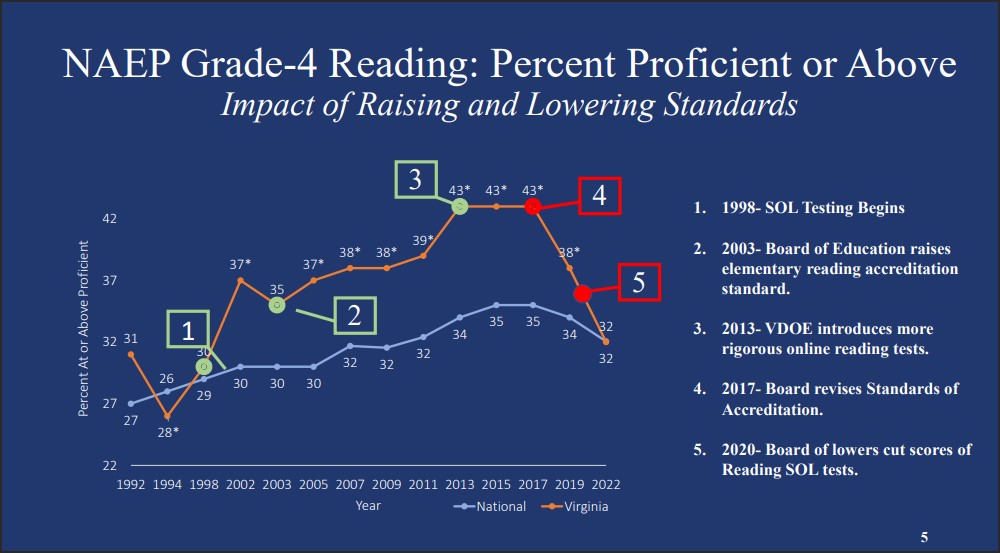
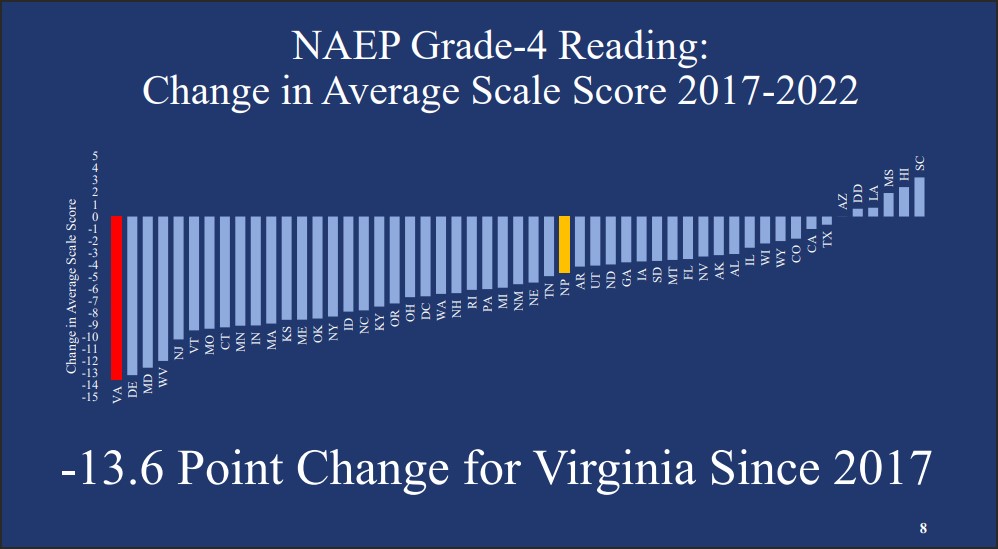
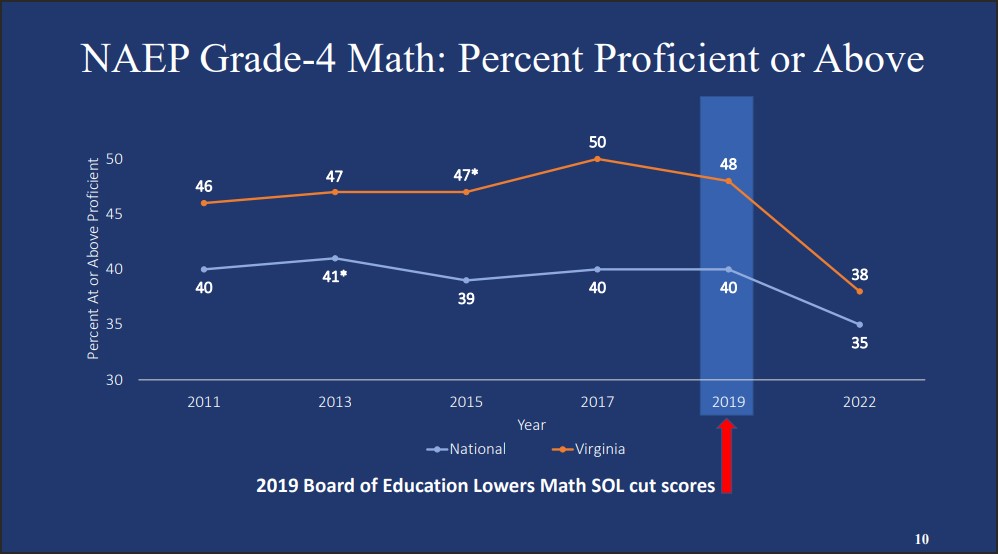
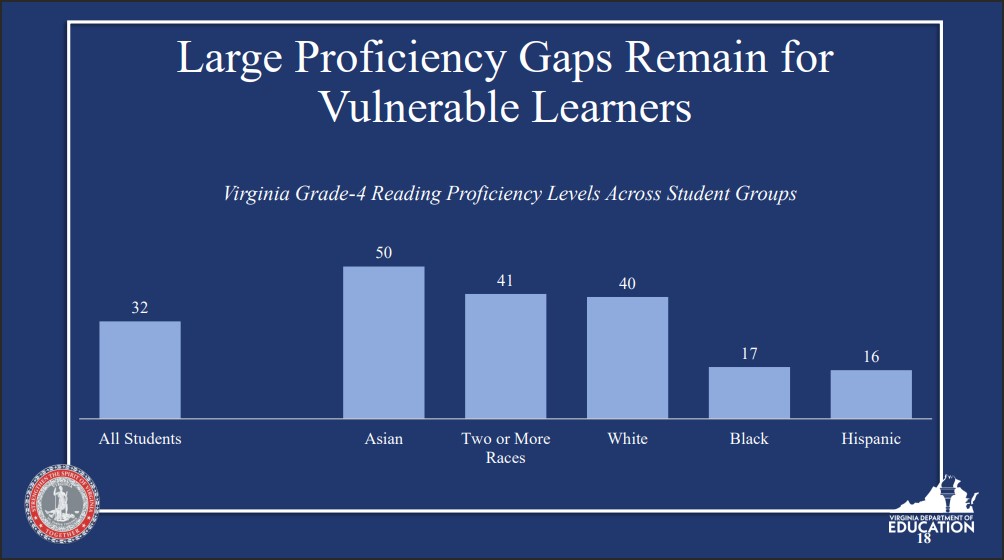
Leave a Reply
You must be logged in to post a comment.